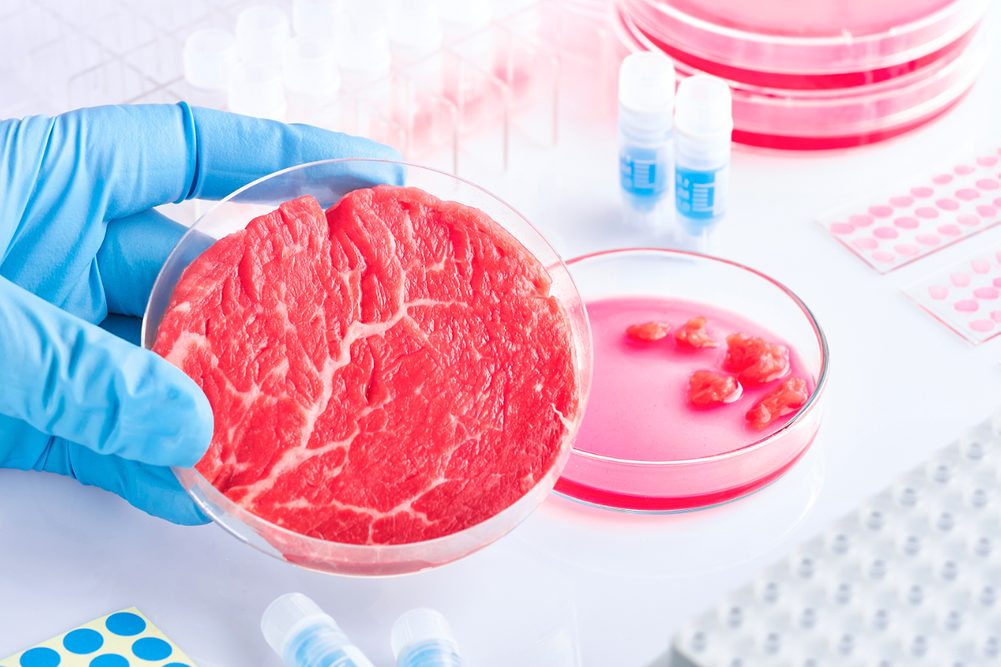BOSTON — In just five years, the cell-based meat industry has evolved from a handful of startups to around 80 startups, including companies developing end products and those working on specific technology challenges. More than $800 million has been invested in the space since its arrival in agrifood in 2016, allowing many players to transition into pilot-scale setup or even commercialization of their products.
Despite this progress, the industry still faces a major challenge in regulatory approval, according to a new report from Lux Research.
Singapore's historical approval of cell-based meat late last year spurred industry momentum, but there remains a lack of clarity on global regulations, said Harini Venkataraman, PhD, analyst at Lux Research and author of the report.
“I’d say that until 2020, cell-based meat was up in the air, maybe a fantasy and not a commercial reality,” Dr. Venkataraman said. “What happened with Singapore’s approval is that it opened the doors for other countries to really think about it and start looking at the commercial angle.”
United States
The United States has been one of the leading countries in terms of thinking about cell-based regulation, Dr. Venkataraman said. An important development came in 2019, when the US Department of Agriculture and the Food and Drug Administration released a formal agreement to create a joint regulatory framework for cell-based meat product approval.
Under the joint regulatory framework, the USDA and FDA will co-regulate all cell-based products except for seafood, which will fall solely under the FDA’s jurisdiction.
“I think that the United States could very well be one of the next countries to grant approval, especially for seafood,” Dr. Venkataraman said. “Because it falls solely under the FDA, and because we’ve seen some developments from companies like BlueNalu in terms of getting cell-based seafood to the market, I imagine seafood regulation may be faster than beef and some of the other types of products we’re looking at.”
For products beyond seafood, the FDA will oversee cell collecting and cell culturing and will be responsible for conducting premarket consultations on production processes. The USDA’s Food Safety and Inspection Service will oversee processing, packaging and labeling of food products from the harvested cells.
“If you think about procuring the cell lines and other raw materials, the FDA will have more visibility into that,” Dr. Venkataraman said. “The USDA will be looking at the finished products as well as getting the latter part of the value chain into place.”
The two agencies created several groups to tackle specific co-regulation challenges. A transfer of jurisdiction group is developing procedures to guide the transfer of inspection at harvest, while a premarket assessment group led by the FDA is working to clarify the processes for premarket reviews of cell-based meat.
“There has been some debate about how this pre-market approval will shake up,” Dr. Venkataraman said. “I don’t think it will be a GRAS-type process, but more of a food additive petition process.”
A labeling group led by the USDA currently is developing joint principles for product labeling claims.
“I think the industry consensus now is either to use ‘cell-based meat’ or ‘cultivated meat,’ because you're cultivating it from a bioreactor,” Dr. Venkataraman said. “We’ve moved away from other terms like lab-grown, clean meat and in-vitro meat.”
Other questions exist, including what the guidelines will be for cell-based meat makers looking to get production facilities up and running.
“Those guidelines for cell-based meats have yet to be established because it’s just too nascent still,” Dr. Venkataraman said. “Eat Just is doing a pretty good job. They have about a 1,000-liter bioreactor setup now in the United States. We’re going to see more from other companies, like BlueNalu and Upside Foods. That’s going to be interesting in terms of moving from a pilot to a commercial facility.”
Global regulations
In the European Union, cell-based meat will be regulated as part of the EU’s Novel Food Regulation published in 2018. While this streamlined process allows for EU-wide approval, it requires at least 18 to 24 months.
“Europe has been very conservative on the novel foods front, so I’m kind of skeptical about how fast they can move,” Dr. Venkataraman said. “The regulatory approval in Singapore has created more of an urgency, but some European startups have shifted their focus to other countries for their initial market entry.”
In Japan, the Center for Rule-making Strategies, a think tank, launched the Association for Cellular Agriculture to advise on regulations to commercialize cell-based meat in the Japanese market.
Cell-based meat remains a nascent industry in China, but industry players have recognized the importance of novel food production methods to meet the region’s looming food insecurity challenge. In June 2020, a Chinese official called for urgent measures to execute a regulatory framework for cell-based meat, including the possibility of regulating it under China’s existing novel food regulation.
Israel is widely viewed as having a favorable regulatory landscape, given the government’s support and involvement, according to Lux. Tel Aviv-based startup SuperMeat last year opened a test restaurant in Israel that serves cultured chicken, though cell-based meat products are not currently regulated in the country.
“Although countries like Singapore and Israel have favorable regulatory landscapes, these small markets will not be enough for widespread adoption and market penetration,” Dr. Venkataraman said. “Larger nations will need to remove regulatory barriers to unlock a mass market.”




